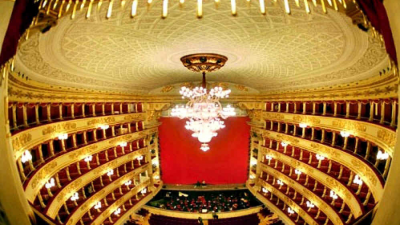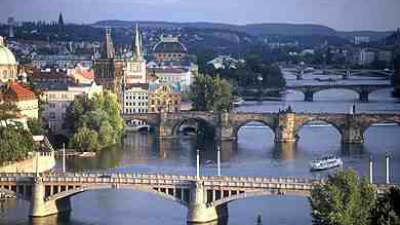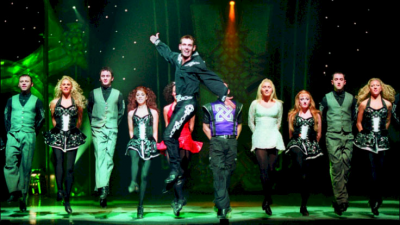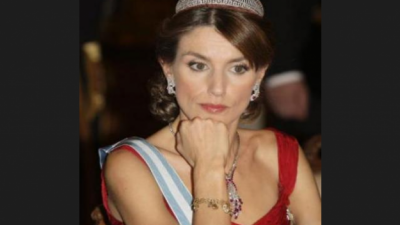The most beautiful opera and theater in the world
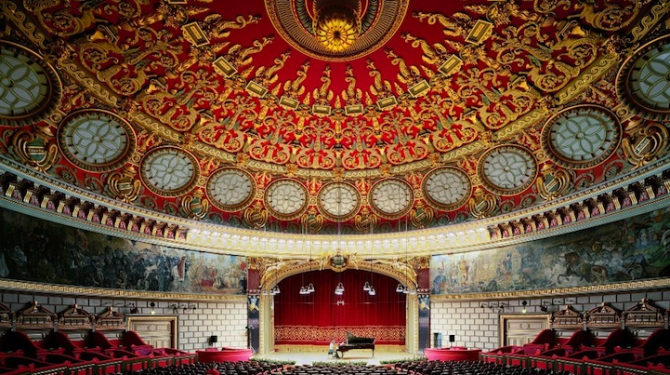
Source: listas.20minutos.es
I recommend in this case see the enlarged photos.
TOP 30:
DROTTNINGHOLM PALACE THEATER (Stockholm)
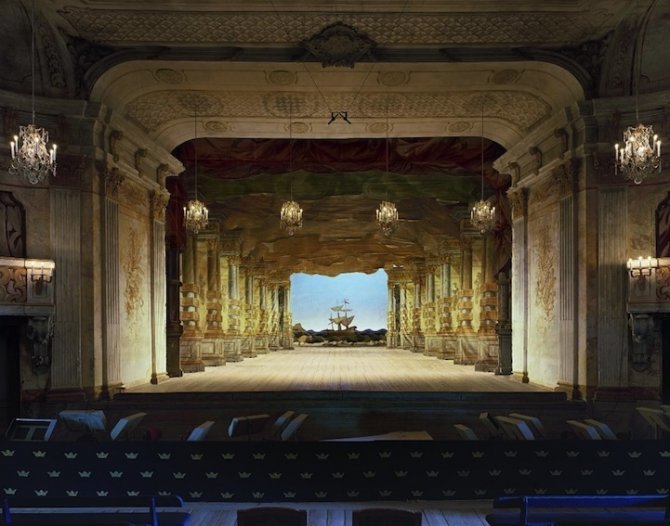
Drottningholm Court Theater (Drottningholms slottsteater) It is the opera house located inside the Drottningholm Palace in Stockholm, Sweden. It is one of the theatrical jewels of the world where the homonymous opera festival is held in summer with preference of Baroque and Haydn, Handel, Gluck and Mozart operas with emphasis on historically or periodically informed performances. The room for 400 spectators was designed in baroque style in 1664-1703 by the architects Nicodemus Tessin, the old and the young, inaugurated in 1766. The scenic machinery (with wave and storm simulators) of the Italian Donato Stopani continues to operate to this day. . Parts of the film Ingmar Bergman's magic flute on Mozart's opera were filmed in the theater in 1975. In 1991, it became part of the World Heritage Site within the UNESCO Royal Domain of Drottningholm.
TOP 29:
OPERA HOUSE (Oslo)
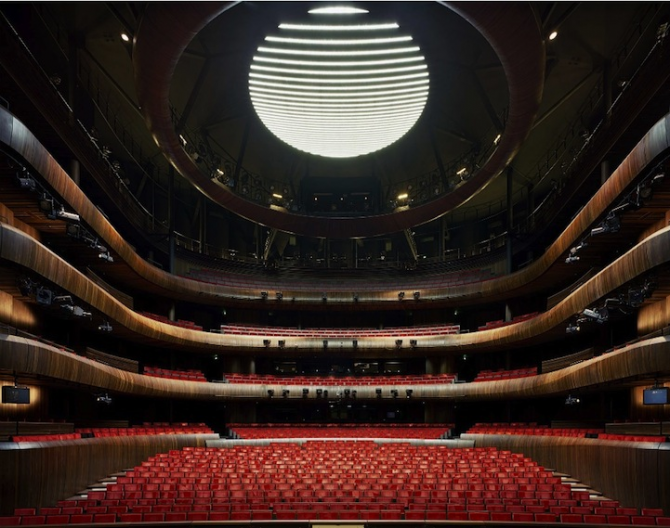
The Oslo Opera House (Operahuset) is home to Norwegian opera and also the National Ballet. The building is located in the Bjorvika district of central Oslo, at the head of the Oslo Fjord, with a total area of 38,500 meters and a capacity of 1,364 in its main auditorium. The exterior surfaces of the building are covered with Italian marble and white granite. So far it is the largest cultural building built in Norway.
TOP 28:
GREAT TCHAIKOVSKY CONSERVATORY ROOM (Moscow)
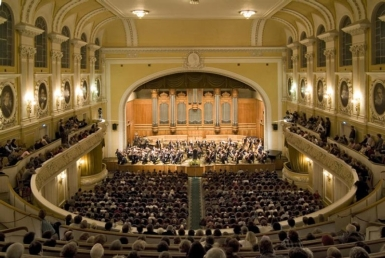
Founded in 1866, there are not many music schools that have produced such a large number of winners in the most prestigious international competitions, especially among pianists, violinists and cellists. It has about 1,000 students today and approximately 160 postgraduates who do their research in musicology. In addition, it has a music school (at the secondary level) that offers 11 grades for hundreds of talented children.
TOP 27:
OPERA CITY (Tokyo)
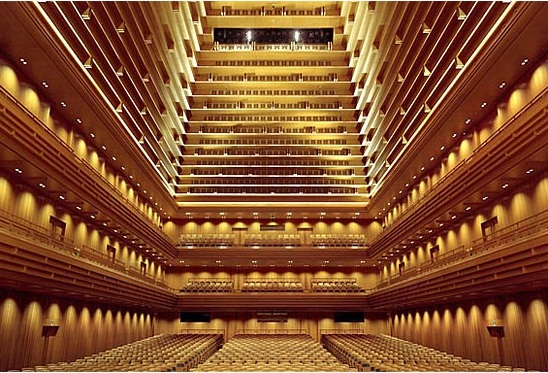
It is the first national artistic center of Japan, for opera, ballet, contemporary art and drama. Located in the Shinjuku area, Tokyo. It was completed in February 1997 and the first representation was in October of that year. Its architecture is modern art and is considered the best in this style.
TOP 26:
STATE OPERATION (Vienna)
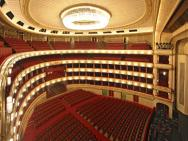
Vienna State Opera (in German: Wiener Staatsoper), located in Vienna, Austria, is one of the world's leading opera companies. Until 1920 it was called Opera of the Court of Vienna (kk Hofoper). It is the nerve center of Viennese musical life and one of the centers of attraction in the musical world. The original State Opera House (then known as kk Hofoperntheater, Royal and Imperial Court Opera House), a neo-Renaissance building much criticized by the Viennese when it was built, was built between 1861 and 1869, on a project of the Viennese architects Eduard van der Nüll and August Sicard von Sicardsburg. Both architects died before seeing the building finished (van der Nüll committed suicide and his partner Sicardsburg died shortly after a heart attack). Other renowned artists participated in the interior decoration, particularly the painter Moritz von Schwind, who painted the famous frescoes of the foyer and the terrace. The theater was inaugurated on May 25, 1869 with Mozart's opera Don Giovanni.
TOP 25:
MIKHAILOVSKY THEATER (St. Petersburg)
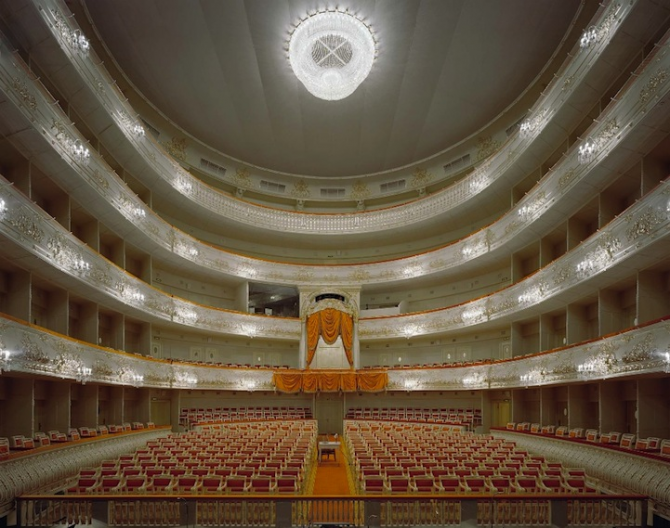
Mali Theater or Maly Theater (in Russian: Малый театр, literally "little theater") or Mussorgsky Theater currently known as Mikhaylovsky Theater, in Russian (Михайловский театр). It is one of the oldest opera and ballet theaters in Russia. Founded in 1833, it is located in a historic building in the arts district of St. Petersburg (Russia).
TOP 24:
COSTANZI DE LA OPERA THEATER (Rome)
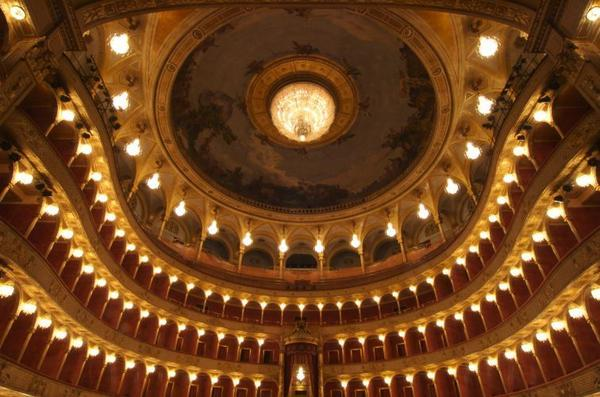
The Costanzi Theater is an opera house in Rome, Italy. Opened on November 27, 1880 in the presence of King Humberto I and Queen Margarita Teresa de Saboya with the Semiramide de Rossini. The Rome Opera House was originally known as the Costanzi Theater by its builder, Domenico Costanzi (1810-1898). It was privately funded by Constanzi, who commissioned the Milanese architect Achille Sfondrini (1836-1900), a specialist in the construction and renovation of theaters. Throughout its history it has undergone several name changes and modifications. It currently has 1600 seats.
TOP 23:
NATIONAL THEATER (Prague)
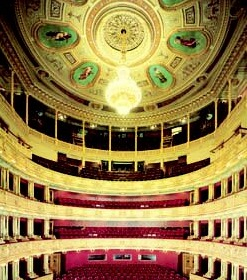
The National Theater (in Czech Národní Divadlo) in Prague is known as the alma mater of Czech opera and as the national monument of Czech history and art. The National Theater is one of the most important Czech cultural institutions, with a very rich artistic tradition that was created and maintained by the most distinguished Czech personality of Czech society. This tradition helped preserve and develop the most important characteristics of the nation: the Czech language and a sense for the Czech musical and dramatic way of thinking. Today the National Theater consists of three artistic ensembles (opera, ballet and drama) that alternate their performances in the historic buildings of the National Theater, the State Theater and the Kolowrat Theater. These three artistic ensembles choose their repertoire not only of classical Czech heritage, but also focus on local authors, they also do so in modern world production.
TOP 22:
OPERA DE SYDNEY (Sydney)
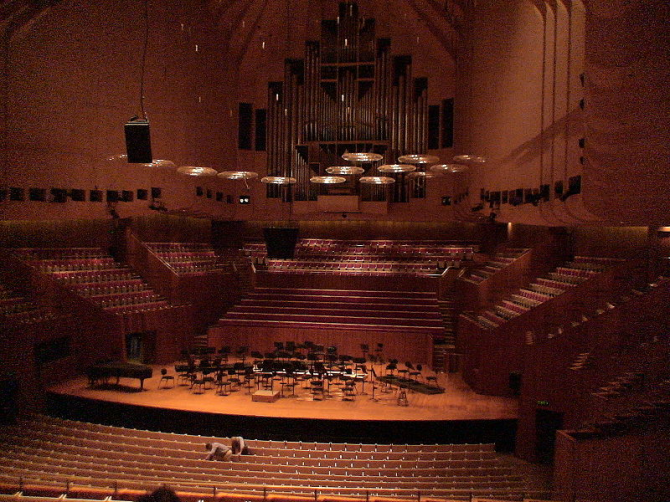
The Sydney Opera House or Sydney Opera House, located in the city of Sydney, state of New South Wales, Australia, is one of the most famous and distinctive buildings of the twentieth century. Declared a World Heritage Site in 2007, it was designed by Danish architect Jørn Utzon in 1957 and opened on October 20, 1973, with the presence of Queen Elizabeth II of the United Kingdom. In the building plays, ballet, opera or musical productions are performed. It is home to the Australian Opera Company, the Sydney Theater Company and the Sydney Symphony Orchestra. It is administered by the Opera House Trust, a public body under the supervision of the New South Wales Ministry of Art.
TOP 21:
RUBEN DARIO NATIONAL THEATER (Managua)
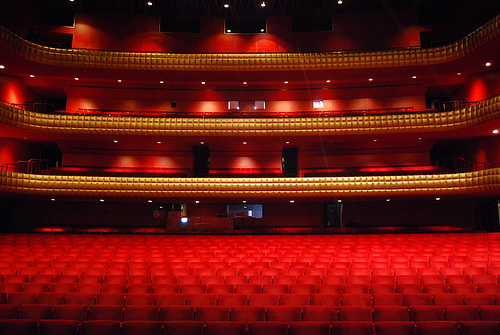
The Rubén Darío National Theater is a building located in Managua, capital of Nicaragua. It began to be planned in 1964 when a group of associates at the Rubén Darío Pro Art Institute headed by the wife of Division General Anastasio Somoza Debayle (Chief Director of the National Guard GN) and later first lady of the republic, Mrs. Hope Portocarrero, He became interested because Nicaragua had a building dedicated to the arts in memory of the poet Rubén Darío, whose birth centenary would be celebrated on January 18, 1967.
TOP 20:
AMAZON THEATER (Manaus)
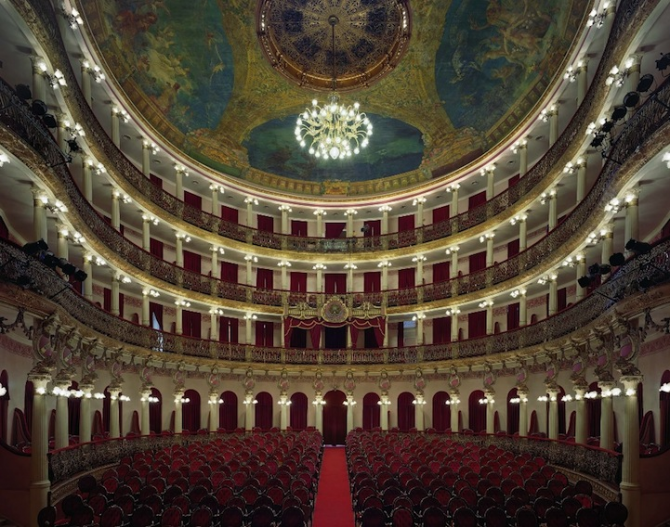
The Amazon Theater is a Brazilian opera house, located in the heart of Manaus, within the Amazon rainforest. The theater was inaugurated on December 31, 1896, with the first interpretation that takes place on January 7, 1897 with the Italian opera, La Gioconda, by Amilcare Ponchielli. It has been restored four times, most recently in 1929, 1974 and between 1988 and 1990, and it currently has 701 seats covered in red velvet. Today, the theater is also home to an annual film festival.
TOP 19:
BAVARIAN STATE OPERA (Munich)
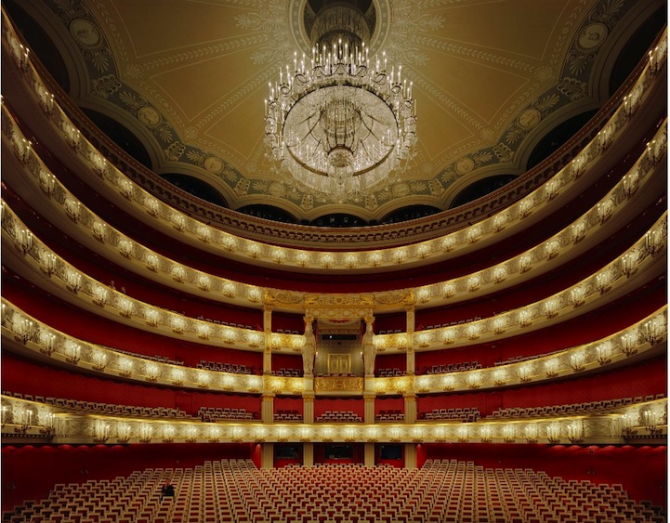
The Bayerische Staatsoper or Bavarian State Opera is the leading opera company in Munich and one of the most important opera companies in Germany and the world founded in 1653. Its orchestra is the Bavarian State Orchestra. The headquarters of the Bavarian State Opera Company is the National Theater at the Max-Joseph-Platz square in Munich in the magnificent 1825 neoclassical building designed by Leo von Klenze and where several Wagner operas such as Tristan were released worldwide und Isolde (1865); Die Meistersinger von Nürnberg (1868); Das Rheingold (1869); and Die Walküre (1870). Building The theater was bombed and virtually destroyed during World War II (October 1943). Based on the original plans of Karl von Fischer, the architect Gerhard Moritz Graubner recreated the original neoclassical theater with 2,100 seats. The theater was enlarged, and only the lobby and the main staircase retain their original appearance. It was inaugurated on November 22, 1963 with a representation of Wagner's opera, Die Meistersinger von Nürnberg.
TOP 18:
ROMANIAN ATHENAEUM (Bucharest)
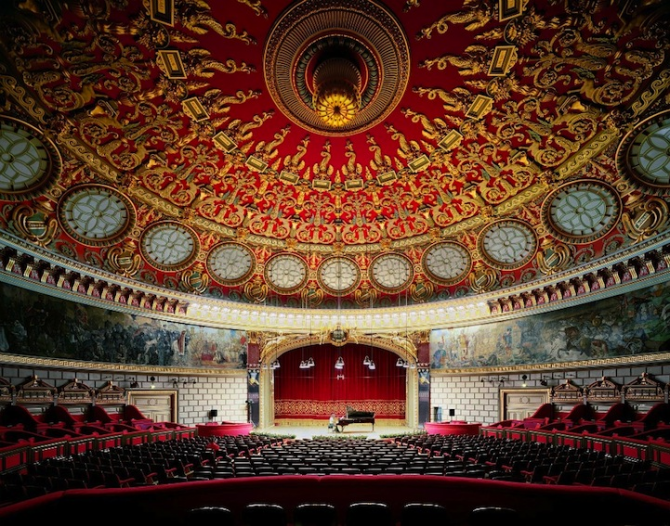
The Romanian Athenaeum is a concert hall located in the center of Bucharest, Romania. It was inaugurated in 1888 and is characterized by the circular structure of the auditorium, which gives it a special uniqueness. Since its inception it has been thirsty for the "George Enescu" philharmonic orchestra, one of the most notable Romanian composers and musicians and the International Festival is held annually in his honor. The building is neoclassical with some Romanesque touches. The auditorium has a capacity of 600 locations. The room has a high-quality acoustics, it is decorated by 25 sets of frescoed pictorial compositions by Costin Petrescu that describe historical scenes from Romania. In front of the building there is a statue of the Romanian poet Mihai Eminescu.
TOP 17:
SUCRE NATIONAL THEATER (Quito)
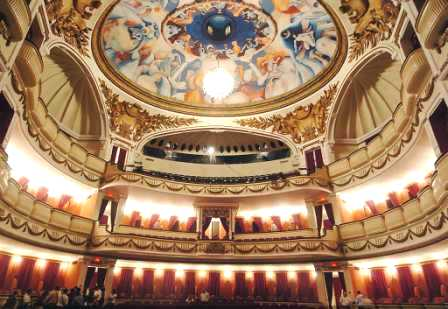
The Sucre National Theater is a cultural building, specifically dedicated to the theater, located in the city of Quito (Ecuador). It is the most important and representative building of its kind in the Ecuadorian capital, and in turn holds the title of National, that is, it is the most relevant theater center in the country. Its monumental cover is one of the most famous postcards of the city and the site on which it is based is one of the most emblematic of the city. The stage of the Sucre has witnessed not only the greatest theatrical and orchestral works that have passed through the country, but has also hosted events of political importance as readings of reports to the nation by the President of the Republic when the National Congress building was under renovation after a fatal fire; and even beauty events like the elections of Queen of Quito and Miss Ecuador. The building is part of the Sucre National Theater Foundation, which also manages the Mexico Theater, Varieties Theater, Mama Cuchara Cultural Center, Foundation House and the Theater Café.
TOP 16:
THEATER ANGELA PERALTA (Mazatlan)
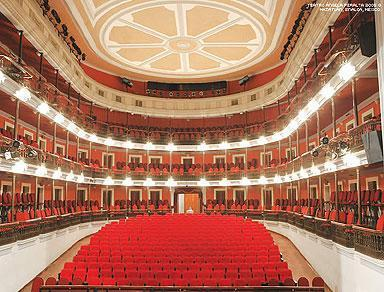
The Angela Peralta Theater formerly known as "Teatro Rubio" was born in 1874 by Mr. Andrés Librado Tapia and Don Santiago, which was declared on December 19, 1990 as the nation's historical heritage. Having a construction area of 3,841 square meters and a nineteenth-century Romantic style design with an Italian-style horseshoe-shaped room, it is nestled in the historic center of Mazatlan, next to the Plazuela Machado. Its exterior facade is two floors; in the first one there is a large hall supported by six striated columns of Doric capital, the second is decorated with an iron railing and rectangular windows. Its building was managed by businessman Manuel Rubio who was looking for a space that lived up to the commercial and political importance that the city of Mazatlan held in 1869. Since its opening in 1940, the Angela Peralta Theater has been the scene of all kinds of cultural, political and entertainment events, including opera, zarzuelas, staging, civic and sporting events, concerts, among others.
TOP 15:
ROYAL OPERA HOUSE or COVENT GARDEN (London)
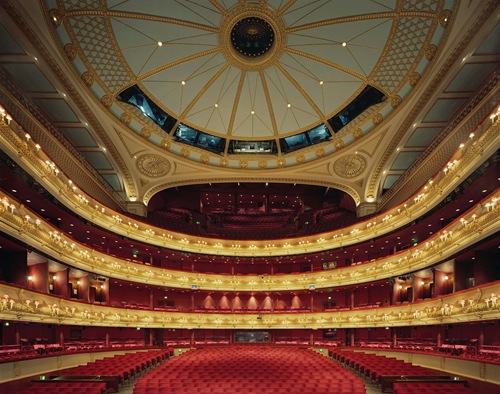
The Royal Opera House is a London theater. It is also known as Covent Garden by the neighborhood where it is located. The theater is home to the royal opera company and the royal ballet of England. It is the third theater that occupies that space. The facade, the foyer and the auditorium were built in 1856, and almost all the other elements present in the complex were rebuilt in the 1990s. The auditorium has a capacity of 2,268 spectators, with four floors of boxes, and the upper gallery. The proscenium is 12.20 m wide and 14.8 high.
TOP 14:
CHATELET THEATER (Paris)
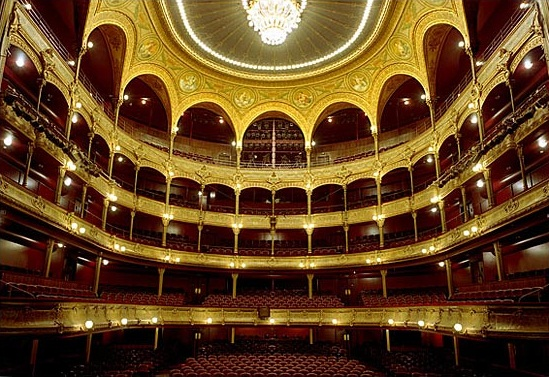
The Châtelet Theater (in French Théâtre du Châtelet) is a Parisian theater located in the first district of the city. It is one of the two theaters built on the old location of a small fortress (chatelet). It was designed by Gabriel Davioud at the request of Baron Haussmann between 1860 and 1862. The César Awards are presented every year. Originally designed to house 3000 people, its current capacity has been reduced to 2500. It was called the Théâtre Impérial du Châtelet. Since 1906 opera and ballet were performed. There Diaghilev and the Russian Ballets performed and it was the theater where Petrouchka de Stravinsky premiered in 1911 and Parade by Erik Satie and Jean Cocteau in 1917. Tchaikovsky, Gustav Mahler and Richard Strauss performed.
TOP 13:
THEATER OF THE REPUBLIC (Querétaro)
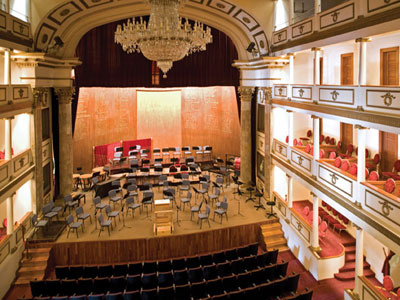
Its construction began in 1845, at the initiative of the governor of the state of Querétaro, Hector flores]. The address was entrusted to the architect Camilo de San Germán, who was replaced by the English engineer Thomas Surplice. It has sober lines on the outside and simple elegance on the inside. It was inaugurated on May 2, 1852 by Governor Ramón Canal de Samaniego, presenting the overture "Iturbide" by Bonifacio Sánchez, and the play "For money the dog dances and for bread if they give it to him". It was originally called Great Theater of Iturbide, then Iturbide Theater, and since 1922 Theater of the Republic. In the theater, a good part of the Queretan social life of the second half of the 19th century passed.
TOP 12:
THEATER COLISEUM (Madrid)
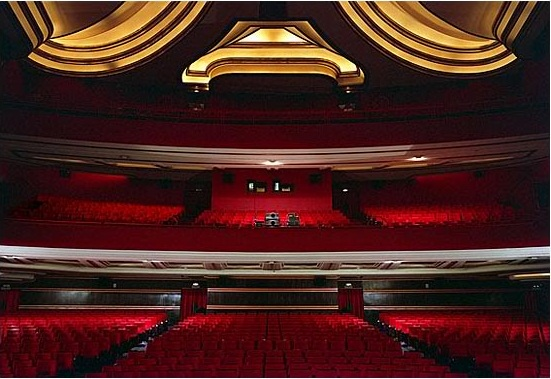
The Coliseum Theater is located at number 78 of the Gran Vía in Madrid and is a Madrid theater. The theater was built around 1932, at the initiative of businessman Jacinto Guerrero, owner of the entire building. In its beginnings it did not reach space for more than 400 people. The theater was considered small at the beginning, but its initial function was none other than to perform the premieres of the works of the famous composer with his own company, most of the time. During its beginnings until the fifties the colosseum behaved as its creator and owner wanted, as a theatrical venue, but after his death he became a cinema. Until the end of the eighties the theater functioned as a cinema, it was recovered and refurbished to return to its former theater function, inaugurating a new stage as one of the most important musical theaters.
TOP 11:
METROPOLITAN OPERA HOUSE (New York)
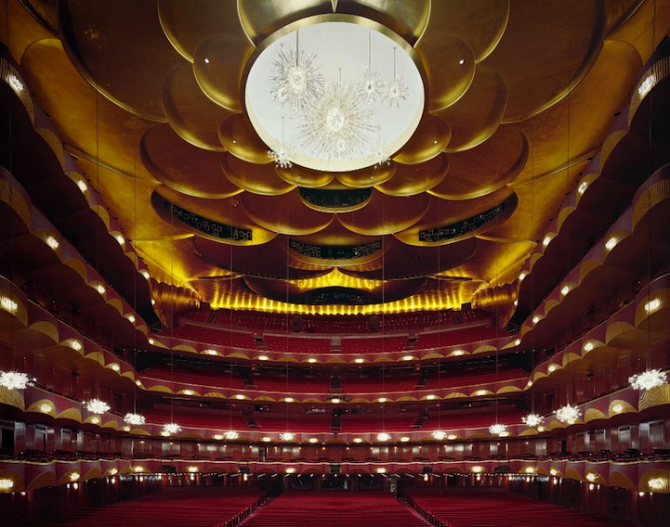
The Metropolitan Opera (also known simply as the Metropolitan, the Met or the Metropolitan Opera House) is an opera house located at the Lincoln Center in New York. It is one of the most important in the world, with a cast of international and North American stars. One of the largest institutions of world opera rivals La Scala in Milan, Covent Garden in London, the Colón Theater in Buenos Aires, the Opera Garnier in Paris and the Liceu in Barcelona. The Met is the largest classical music institution in the United States, and annually presents some 220 opera performances. Its headquarters is considered one of the main opera houses in the world, and one of the largest. Each season of the Met runs from September to May, and presents around 27 operas in a rotating repertoire program, with seven weekly performances of four different titles. From Monday to Saturday the performances are offered at night, with a matinee on Saturday at four in the afternoon
TOP 10:
MARLINKSY THEATER (St. Petersburg)
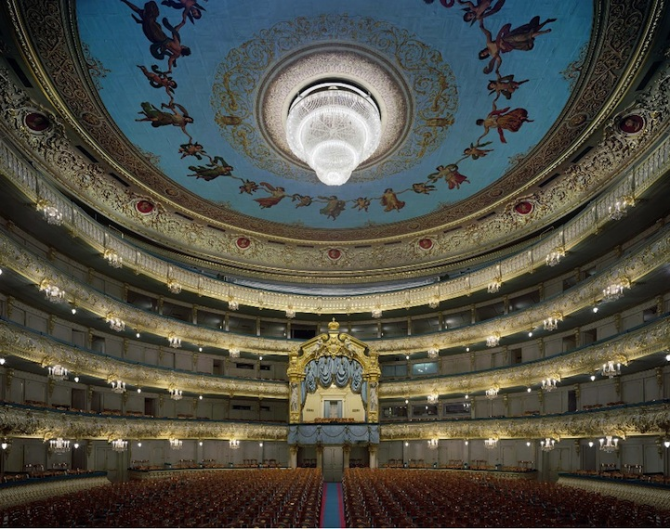
The Mariinski Theater (Russian: Мариинский театр), formerly known as the Kírov Opera and Ballet Theater (1935-1992) and as the National Opera and Ballet Academy (1920-1935), is a historic opera and ballet theater in St. Petersburg , Russia. It is the headquarters of the famous Mariinski Ballet (called Ballet Kirov during the Soviet era). It owes its name to Maria Alexandrovna, wife of Tsar Alexander II of Russia. It was built between 1859 and 1860 by the architect Albert Cavos, inspired by the work of Gottfried Semper, in particular the Dresden Opera.
TOP 9:
OPERA DE MONTE CARLO (Monaco)
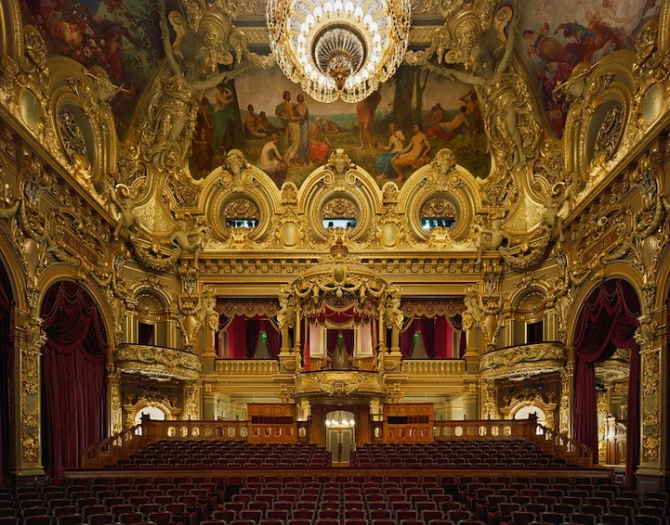
The Monte Carlo Opera (in French: L'Opéra de Monte-Carlo) is an opera house designed by the architect Charles Garnier under the direction of Marie Blanc (widow of François Blanc). It was inaugurated on January 25, 1879 with the performance of Sarah Bernhardt.
TOP 8:
THE FENICE (Venice)
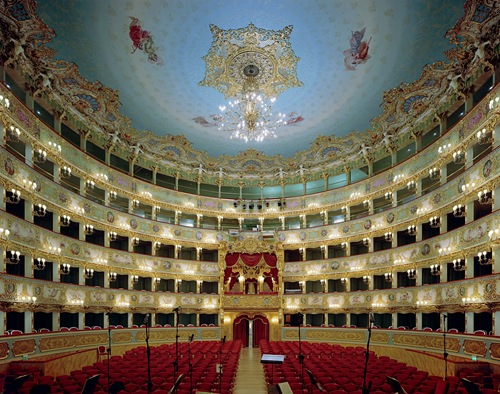
Located in Venice, Italy, the Fenice (the phoenix) is one of the most famous opera houses in the World. It has premiered many of the best known Italian operas. In 1774, the San Benedetto Theater, the most important opera house in Venice with over forty years of history, was destroyed by fire. Shortly after its reconstruction, a legal dispute arose between the company that managed it and the owners, the Venier family. The dispute was won by the family, so the company decided to build a new theater on the San Fantin Field on its own. The works began in June 1790, and finished in May 1792. The new theater was named La Fenice to honor the resurgence of the company, first of its ashes, and then of its move. La Fenice was inaugurated on May 16, 1792 with an opera by Giovanni Paisiello called I Giochi di Agrigento.
TOP 7:
THEATER SOLIS (Montevideo)
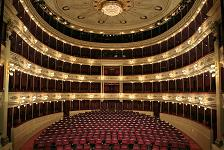
The Solís Theater is the main artistic scene of the city of Montevideo, Uruguay. On June 25, 1840, a shareholder company was formed in Montevideo, which would be dedicated to the construction and company of a theater. It was the result of the initiative of Juan Miguel Martínez and Antonio Rius, who were subsequently incorporated by Vicente Vázquez, Luis Lamas, Juan Benito Blanco, Ramón de Artagaveitía, Manuel Herrera y Obes, Juan Miguel Martínez, Francisco Farrial - or Farías, according to other sources— and Florentino Castellanos. All of them formed the Board of Directors of a company that brought together 156 entrepreneurs in total. The first meeting of the Company for a New Theater in Montevideo - under its name - was held on June 16 of that year, where the construction of the new cultural venue was founded as an expression of a free entrepreneurial spirit, the which concerned itself with providing the society of the nascent Eastern State of Uruguay with a "theater that is in harmony with the prosperity and wealth of the Republic," justifying it as "an indispensable necessity for our society, at the height that its illustration and commerce ».
TOP 6:
LA SCALA (Milan)
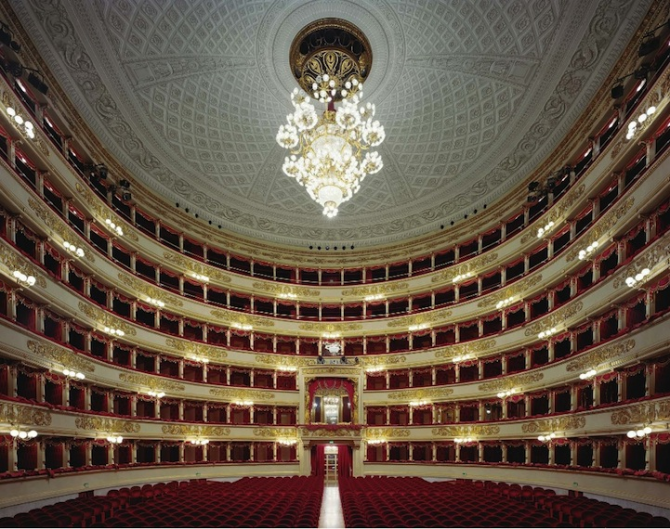
It has been located in two buildings. A fire destroyed the first, the former Ducale Theater, on February 25, 1776, after a carnival gala. The ninety owners of the theater boxes asked the archduke Ferdinand of Austria to build a new theater and a provisional one during the works. The neoclassical architect Giuseppe Piermarini made an initial design that was rejected by Count Firmian (an Austrian governor). A second plan was accepted by Empress Maria Teresa I in 1776. The new theater was built in the place formerly occupied by the Santa Maria alla Scala church, which gave its name to the theater. The church was consecrated and demolished, and in a period of two years Pietro Marliani, Pietro Nosetti and Antonio and Giuseppe Fe completed the construction of the new building. It was inaugurated on August 3, 1778, with the name of Nuovo Regio Ducal Teatro alla Scala, with the opera L'Europa riconosciuta de Salieri.
TOP 5:
THEATER DI SAN CARLO (Naples)
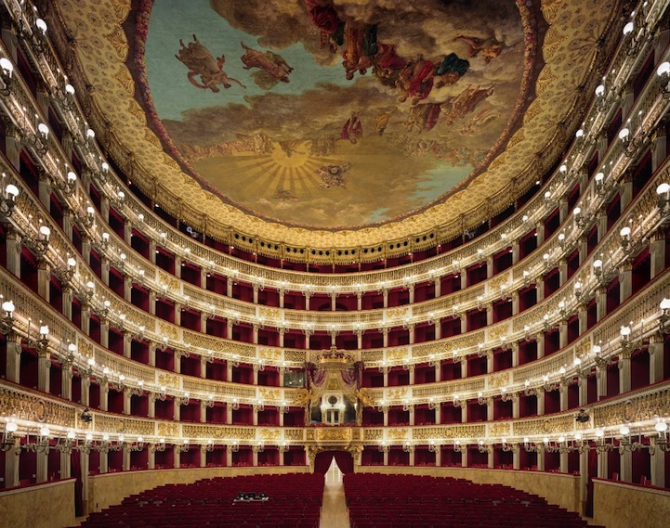
The San Carlos Theater (Teatro di San Carlo in Italian) is the most important theater in Naples and one of the most famous in the world. Opened on November 4, 1737, it is the oldest active opera house in the world. Due to its size and structure, it has been the model of the following theaters in Europe. It is recognized by Unesco as a World Heritage Site.
TOP 4:
PALAIS GARNIER (Paris)
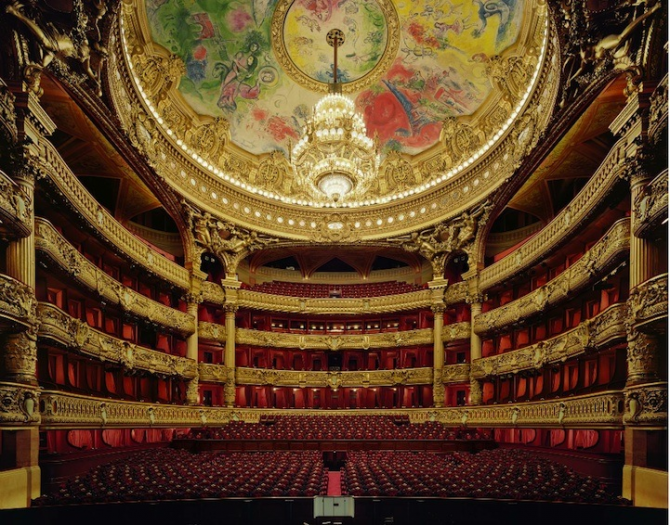
The Garnier Opera, also known as the Garnier Palace or the Paris Opera, is one of the most characteristic buildings of the IX District of Paris and the urban landscape of the French capital. Napoleon III ordered its construction to the architect Charles Garnier, who designed it in Neobarroco style. Since its inauguration in 1875, the opera was officially called the National Academy of Music - Opera House. It retained its title until 1978 when it was renamed National Opera House in Paris. In 1989, the Opera Company moved its headquarters to the newly built Bastille Theater and its old headquarters was named Garnier Palace, where the National Academy of Music remains. Despite the change of official name and the transfer of the Opera Company, the Garnier Palace is still popularly known by the name of the Paris Opera.
TOP 3:
PALACE OF THE ARTS QUEEN SOFIA (Valencia)
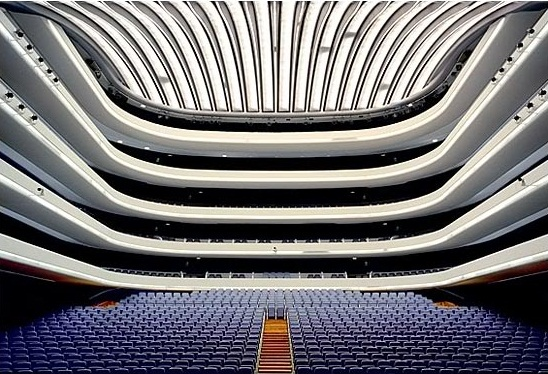
The Reina Sofía Palace of the Arts (in Valencian Palau de les Arts Reina Sofia) is the opera house of Valencia (Spain), and home of the Valencian Community Orchestra. It is the work of Santiago Calatrava and is part of the architectural complex of the City of Arts and Sciences. It was inaugurated on October 8, 2005. The first opera was performed on October 25, 2006, being chosen for the occasion Fidelio, by Beethoven.
TOP 2:
GRAND THEATER OF LICEO (Barcelona)
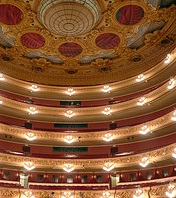
The Gran Teatro del Liceo in Barcelona, known as “El Liceo” (The Liceu in Catalan), is the oldest and most prestigious active theater in Barcelona, especially as an opera house, among which it is considered one of the most important in the world. Located on La Rambla in Barcelona, it has been the scene, for over 150 years, of the most prestigious works, performed by the best singers in the world. For decades, it has been a symbol and meeting place of the Catalan aristocracy and bourgeoisie.
TOP 1:
THEATER COLON (Buenos Aires)
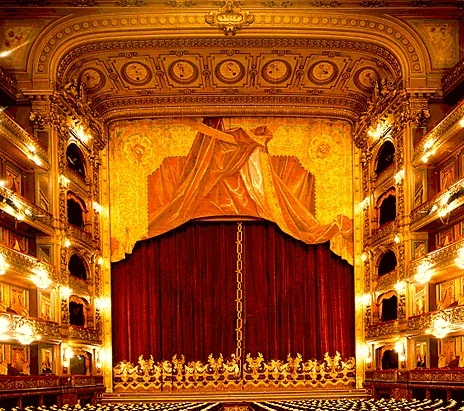
The Colón Theater, located in the City of Buenos Aires, is one of the most important opera houses in the world for its size, acoustics and trajectory. It is considered one of the five best opera houses for its spectacular acoustics. Comparable to La Scala in Milan, the Wiener Staatsoper, the Semper Opera in Dresden, and the Paris Opera, it is an unequivocal index of consecration and inescapable appointment of those who love music. The Colon has always been a theater revered by the public and by the greatest artists. At the end of 2006, the Teatro Colón was subjected to a profound process of consertive restoration and technological modernization, which returned the original brightness of its splendor years, managing to maintain its acoustics. It was reopened on Monday, May 24, 2010, as part of the celebrations of the Bicentennial of Argentina

